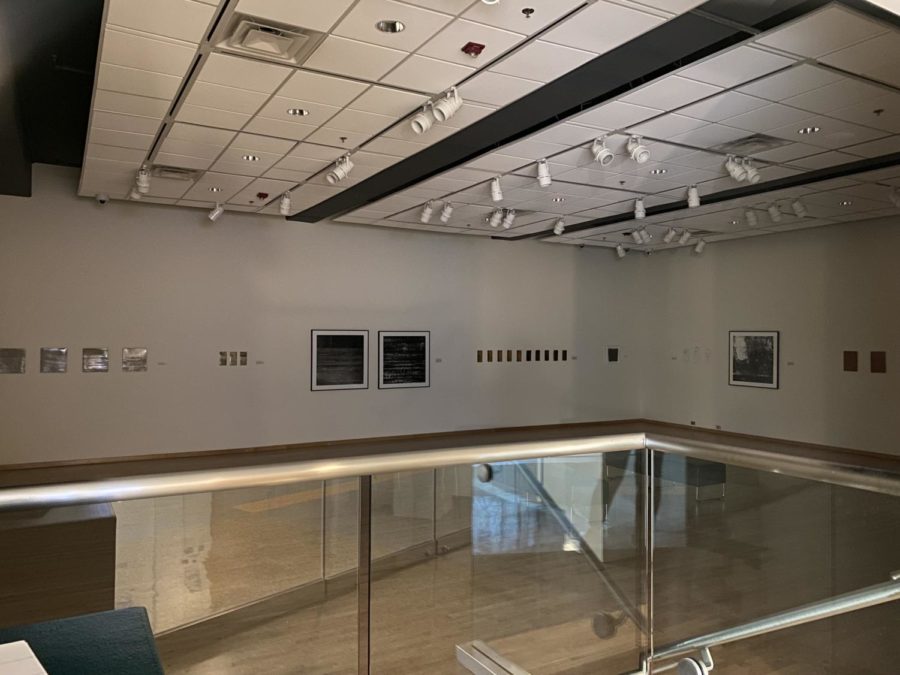Staniar exhibit explores the boundaries of drawing
Leah Raintree’s conceptual work challenges the traditional definition of a drawing practice
March 15, 2022
On Feb. 15, Virginia-born artist Leah Raintree gave a public talk on “the landscape is not still,” her exhibit which will remain in the Staniar Gallery through Mar. 18.
Most of Raintree’s work focuses on the environment and is site-specific. “The landscape is not still” features pieces that respond to sites like the Canadian Rocky Mountains, Maine and the familiar rural landscape of Virginia.
Raintree borrows materials directly from the earth and combines mixed media, photography and ceramics processes to comprise her broadly-defined drawing practice.
For instance, Raintree showed the audience a picture of material embedded in the sand at a beach in Rockaway, Queens, after the beaches were remediated in the wake of Hurricane Sandy. She referred to the photography of these construction debris as “found drawings.”
“The photographic works you see in the gallery are, to me, actually drawings, using site-specific materials,” Raintree said.
Raintree acknowledged a difference in how she views work more closely linked to her hand-drawing process versus her less traditional “drawings.”
“Most of the other works really kind of remove my hand and are much more of an index of the material itself,” she said.
The exhibit features a series of gelatin silver prints entitled “hand that breaks the weather,” which Raintree made using large-format negatives combined with sediment, stone and ice from the Canadian Rocky Mountains.
She said she wanted to use the glacial materials to produce an image that recalled glacial movement.
“I wanted to mimic glacial behavior by dragging, depositing [materials] etc., then exposing them to light, to time, and producing an image.”
Briteil Danipour, ’23 said she was struck by Raintree’s unique use of objects for mark making.
“I remember Leah talked about how she created her art by hitting rocks in different ways and numbers of times,” Danipour said.
Another short series featured within the exhibit was a group of ceramic “drawings” created using a glaze made from clay slip found in Alberta, Canada.
Appropriately, the pieces are entitled “Alberta.”
“I was experimenting, kind of painting with [the slip], making thick washes,” Raintree explained her process. “Not knowing how I wanted to treat it, I made bricks with historic brick-making molds. I did impressions of the historic bricks into the clay. But what I ended up landing on were things that related back to drawing.”
The works in the exhibit all tie back to Raintree’s inclusive drawing practice and the ecological concern that characterizes her art.
According to Raintree’s artist statement, all of her work is meant to contextualize an individual’s relationship to the environment.
“Central to the exhibition is the interrelationship between humanity and the planet, with an interest in attempts to fix, utilize, and frame the earth, and what escapes these frameworks of use and understanding.”



